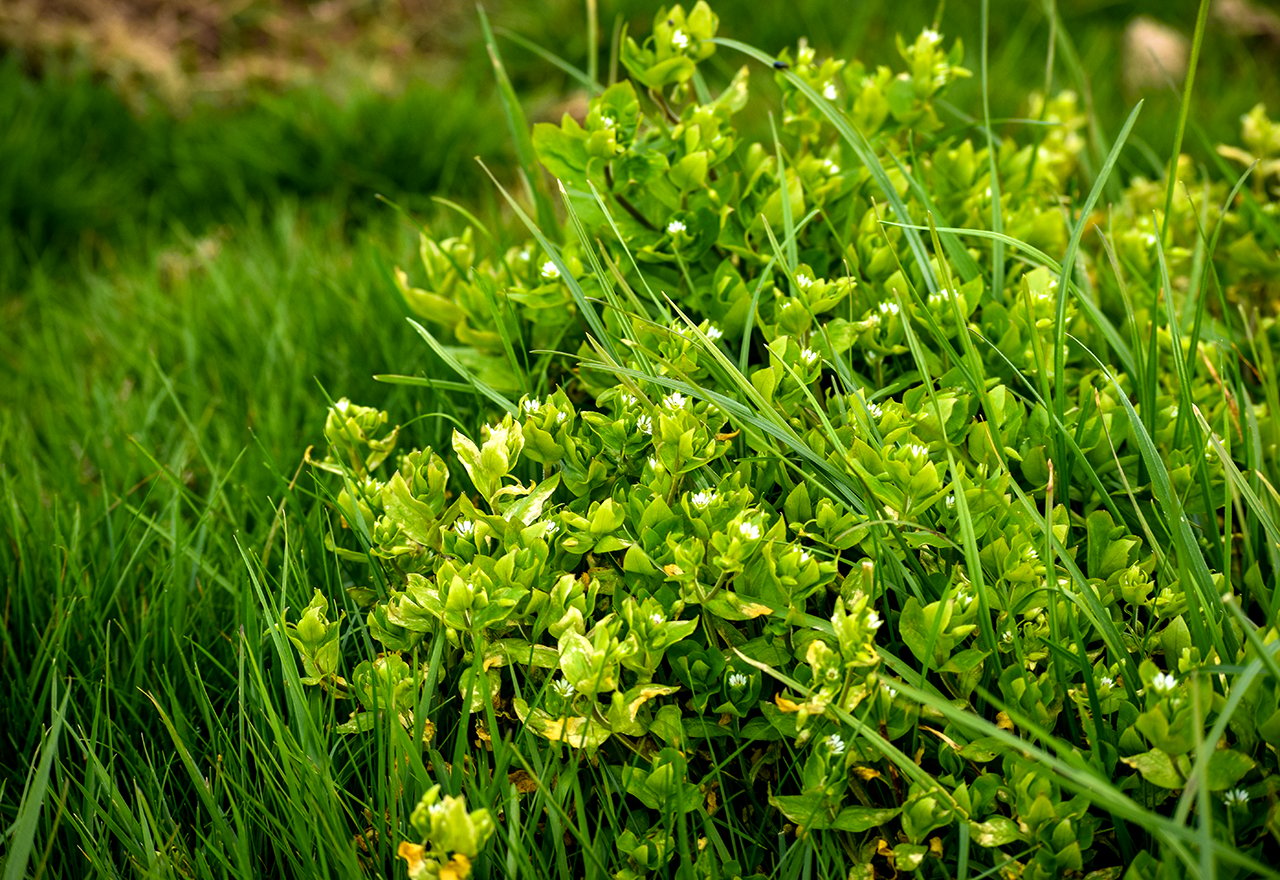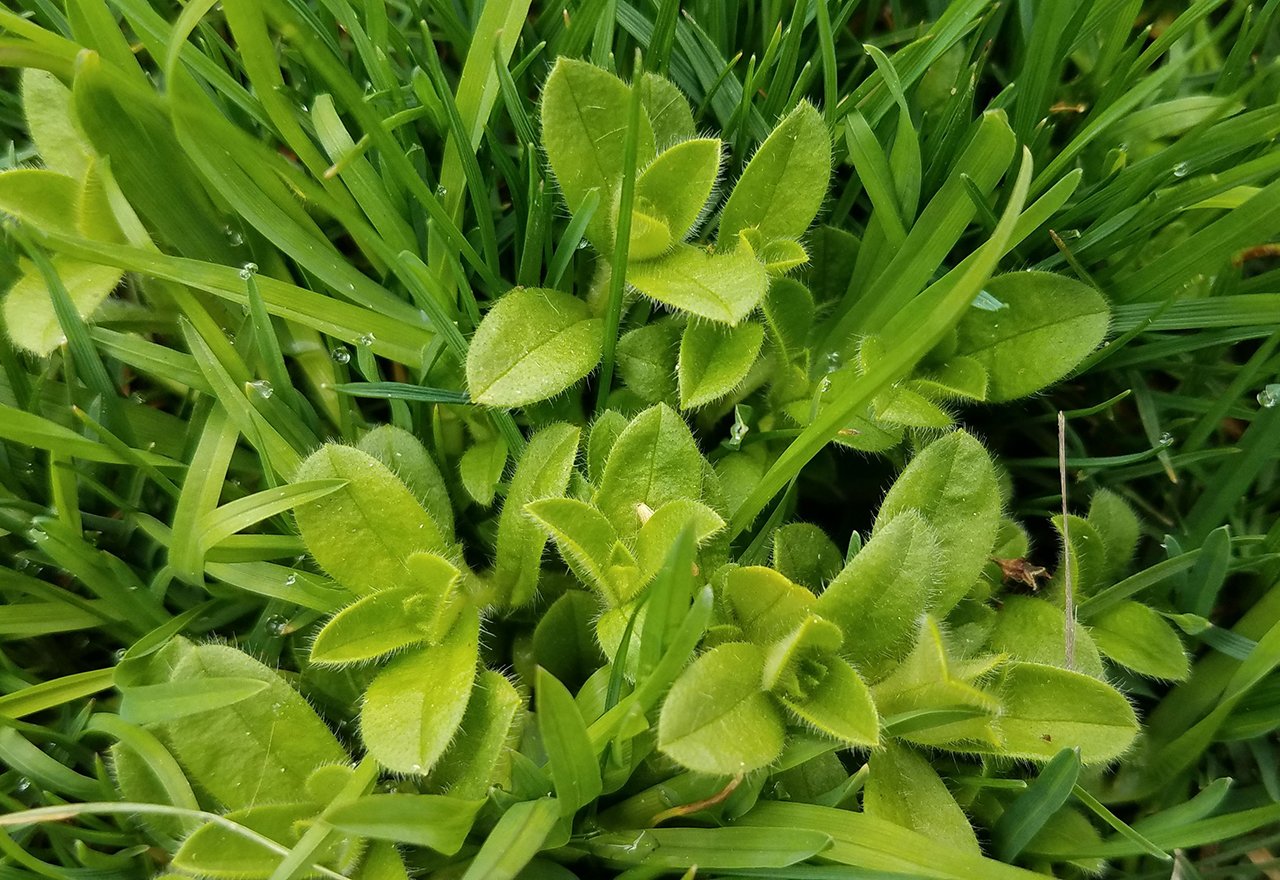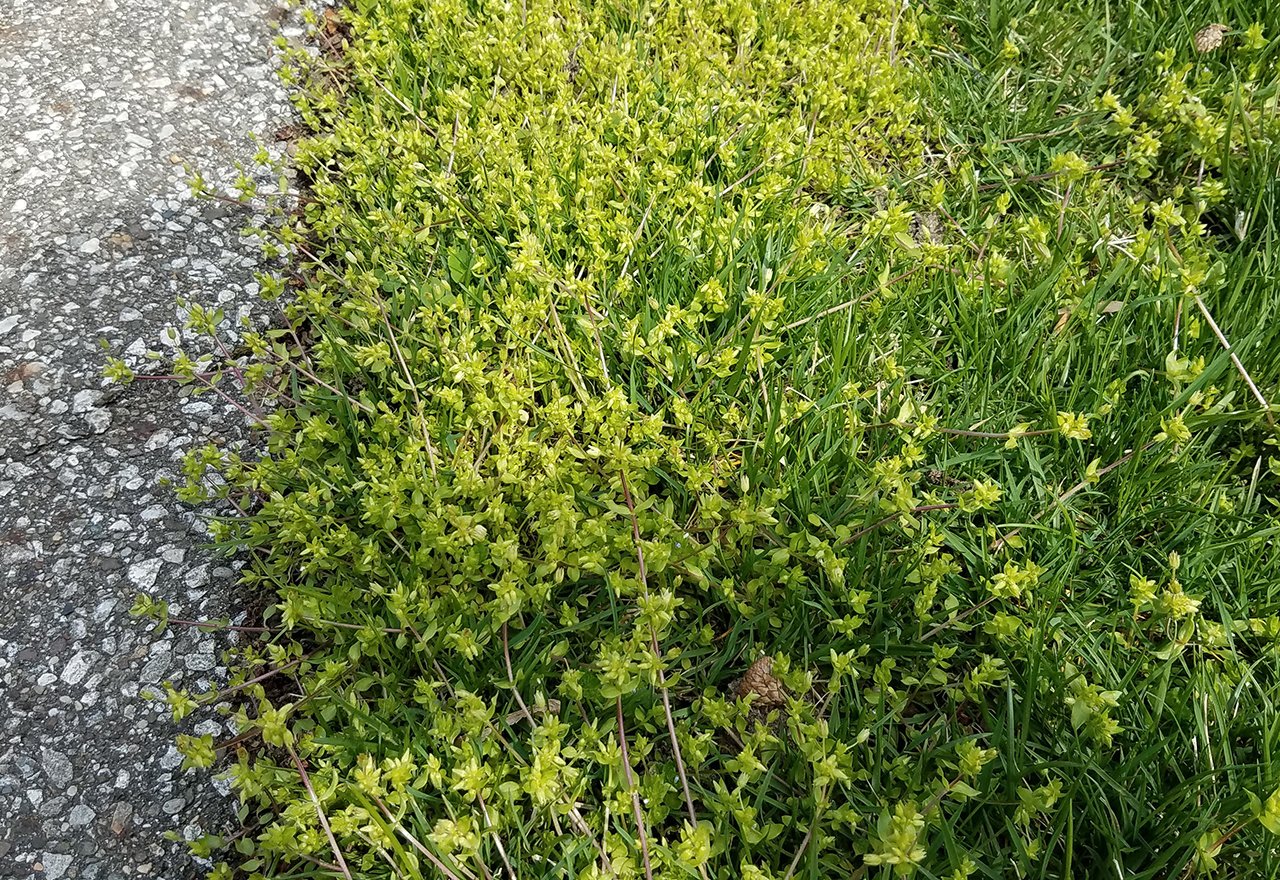An Edible Broadleaf Weed that Grows in Dense Mats in Lawns and Gardens

Native to Europe, there are two different species of Chickweed. The most common species, Stellaria Media, is a bright green, cool-season annual weed with pointed oval leaves and small, white, star-shaped flowers that usually bloom in the Spring and last through the Fall. A line of fine hairs can be found along the stems of Common Chickweed, distinguishing it from the almost identical poisonous weed Scarlet Pimpernel. Common Chickweed has a shallow root system, and grows in lush dense mats. Expect to find this weed in lawns, gardens, fields and along roadsides.
Mouse-Ear Chickweed, Cerastium Vulgatum, is the prostrate perennial broadleaf species of the plant. Similar to Common Chickweed, it forms in dense mats, covering turf, gardens and landscaped areas. Mouse-Ear Chickweed can be distinguished by its hairy leaves. This plant also tends to have darker green leaves that are generally longer than those of Common Chickweed.

Mouse-Ear Chickweed (Cerastium Vulgatum)
Chickweed favors moist soil and sunlight. This weed grows abundantly in neutral pH soils with high nitrogen and poorly in low pH or acidic soils. The presence of Chickweed might indicate that you have Compacted Soil. This weed is very competitive, as it tolerates drought and lawn mower wear and tear well. Although Chickweed is an annual broadleaf weed, it's known to grow throughout the season and can transform from flower to seed to plant in roughly five weeks. This weed spreads rapidly from new roots emerging from nodes on the stems. Due to this prolific reproductive cycle, this hardy weed can quickly and easily pose a threat to any lawn with the right conditions.
Chickweed can be very difficult to eradicate, given its adaptability to various weather conditions and soil types. It's also very competitive, tolerating drought and lawn mower wear and tear well. However, it is possible to liberate your lawn from this weed.
The best way to kill Chickweed is by pulling as much of it out of the ground as possible by hand. Both species have shallow root systems, however, Common Chickweed is easier to eliminate, since it does not grow back after being removed. Mouse-Ear Chickweed, on the other hand, can spawn new plants from the rootstock, therefore removing the entire root system is vital in eliminating the weed from your lawn.
Another recommended method of removing Chickweed is to aerate the area where the weed was growing. You can try Core Aeration or Liquid Aeration or opt for a DIY product, such as Liquid Aerator. Once the weed is removed from the affected area, you'll want to plant new, tougher grass varieties in the exposed soil, such as our Tuff Turf Lawn Seed.
When it comes to preventing Chickweed, avoid frequent, shallow watering, which fosters the growth of these weeds in your lawn. Instead, encourage deep roots, by watering your lawn heavily two or three times a week. This will help strengthen your grass and beat out shallow rooted Chickweed. It's also recommended to mow high, which helps deprive these low growing weeds from getting the sunlight they need to thrive. Read more tips on How To Achieve A Successful Lawn Care Program.
It's important to note that Chickweed can be cultivated as a crop. It can be grown in gardens and used in place of lettuce in salads. Chickweed is highly nutritious and very tasty, often described as pleasant and mild, similar to spinach. Traditionally, Chickweed was used as a restorative tonic for patients recuperating from serious illness. It's high content of vitamins C, B, and A, as well as a host of minerals helped to provide healing support. It has been used internally as an anti-inflammatory, pain reliever, digestive support and kidney tonic. It also has uses externally for skin afflictions like acne, eczema, psoriasis, rashes, minor burns, boils, cuts, and insect bites. With it's cooling and drying properties, it provides a soothing and purifying affect.
